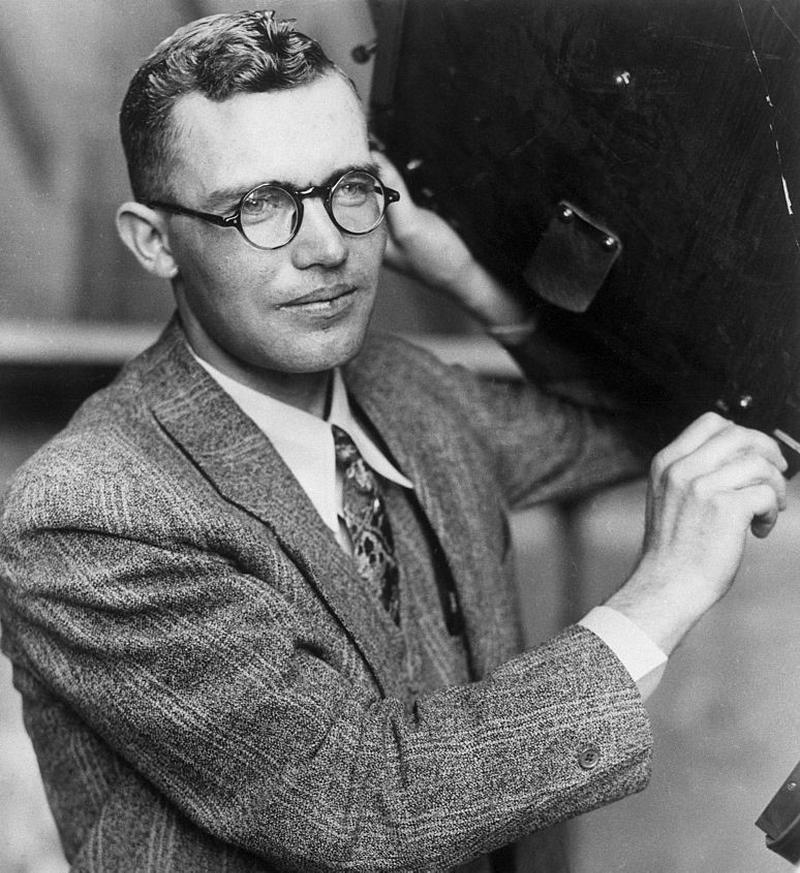Is Pluto A Planet? How Clyde Tombaugh Discovered Pluto In 1930
By | February 16, 2021

On February 18, 1930, a young, eager, self-taught astronomer named Clyde Tombaugh made an observation that changed the way we think about our galaxy as well as the trajectory of his own life. Who was Clyde Tombaugh? How did he discover Pluto? Is Pluto even a planet?
Clyde Tombaugh
Clyde Tombaugh was born on February 4, 1906 in Streator, Illinois. He was the son of impoverished farmers Muron Dealvo Tombaugh and Adella Pearl Chritton Tombaugh, who moved to Burdett, Kansas when young Clyde was 16 years old. After graduating from the local high school, the space enthusiast planned to study astronomy in college, but his dreams were derailed when a violent hailstorm destroyed the family's crops, pushing them to the edge of bankruptcy.
Although Tombaugh was devastated by the financial and academic setback, he was determined to continue his independent study of the planets and stars. In 1926, Tombaugh began constructing a series of homemade telescopes with powerful lenses and mirrors, which he learned how to do from an article in Popular Astronomy. With just a shovel in hand, he dug a large trench in his backyard to create an environment with a constant temperature and no wind, ensuring the most accurate images, although his family used it as a root cellar and tornado shelter. He even taught himself complex geometry and trigonometry to analyze his observations.

Planet X
He sent his drawings and reports to the Lowell Observatory in Flagstaff, Arizona for advice from its scientists, intriguing the observatory's owner, Percival Lowell, who invited the 23-year-old Tombaugh to work for him. Lowell was an eccentric businessman who built the observatory largely to prove his suspicion that Mars contained artificial irrigation canals, but by the time Tombaugh entered his life, he had moved on to a new pet theory: a potential ninth planet orbiting the Sun beyond Neptune. He wasn't alone—astronomers of the day called the theoretical celestial body Planet X.
At Lowell Observatory, Tombaugh fulfilled his employer's wish of identifying this planet, though probably not in as flashy a manner as he'd hoped. Tombaugh simply compared two photographs of the same star field, taken six days apart, and noted that while the stars all remained constant, one tiny, dim object at the far edge of the galaxy—now known as Pluto—appeared to have moved.

Tombaugh's Legacy
The identification of Pluto thrust Tombaugh into the limelight. The University of Kansas offered him a full scholarship, and he earned both a bachelor's and master's degree in astronomy in 1936 and 1938, respectively. He fell in love with the daughter of the owners of the boardinghouse where he lived during his studies, Patsy Edson, and the young couple married in 1934 before having two children.
Tombaugh turned out to be no one-planet wonder. He's credited with identifying and naming 15 asteroids and contributing key observations about nearly 800 additional ones, identifying several new galaxies and star clusters, and noting important details about the surfaces of several planets. He even got his own comet, 274P/Tombaugh-Tenagra, named after him. He continued his work at Lowell Observatory until the 1940s, when he instructed members of the military on navigation at Northern Arizona University, and went on to work for White Sands Missile Range and teach astronomy at New Mexico State University until his retirement in 1973. He was inducted into the International Space Hall of Fame in 1980.
When Clyde Tombaugh died in 1997, his remains were cremated and stored in a small canister that was placed aboard the spacecraft New Horizons before it blasted off from Cape Canaveral, Florida in early 2006 with the mission of collecting data as far as the edge of the Solar System, three billion miles away. Tombaugh's remains sailed past Pluto in 2015.

So Is Pluto Even a Planet?
When Tombaugh identified Pluto, it was considered a planet by the scientific community, but in 2006, the International Astronomical Union set new perimeters by which celestial bodies are defined. The new definition of a planet required an orbit of the Sun, sufficient gravitational mass to form a spherical shape, and sufficient gravitational pull to clear its orbit. Pluto fulfilled the first two requirements but failed the third, so it was demoted to dwarf planet.
It might bum him out a little, but just because Pluto is no longer a planet doesn't mean Tombaugh's identification wasn't important. Today's astronomers credit Tombaugh with "opening the door to the third zone" of the Milky Way, specifically the vast Kuiper Belt, a band containing thousands of asteroids, dwarf planets, comets, and exoplanets beyond Neptune.

